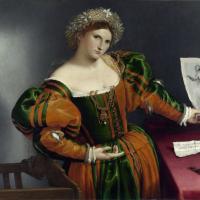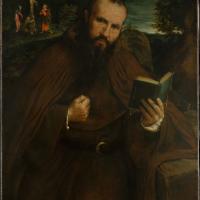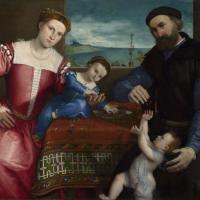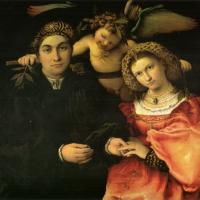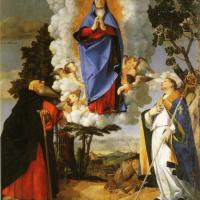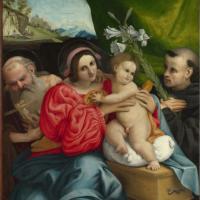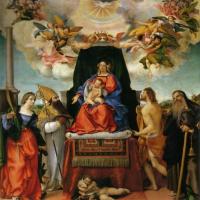Lorenzo Lotto
Lorenzo Lotto
Lorenzo Lotto (1480-1556/1557)
Lorenzo Lotto (1480 – 1556/57) was an Italian painter, draughtsman and illustrator, traditionally placed in the Venetian school, though much of his career was spent in other North Italian cities. He painted mainly altarpieces, religious subjects and portraits. He was active during the High Renaissance and the first half of the Mannerist period, but his work maintained a generally similar High Renaissance style throughout his career, although his nervous and eccentric posings and distortions represented a transitional stage to the Florentine and Roman Mannerists.
During his lifetime Lotto was a well respected painter and certainly popular in Northern Italy; he is traditionally included in the Venetian School, but his independent career actually places him outside the Venetian art scene. He was certainly not as highly regarded in Venice as in the other towns where he worked, for he had a stylistic individuality, even an idiosyncratic style (although it fit within the parametres of High Renaissance painting) and, after his death, he gradually became neglected and then almost forgotten; this could be attributed to the fact that his oeuvre now remains in lesser known churches or in provincial museums.
In the last period of his life, Lorenzo Lotto would frequently move from town to town, searching for patrons and commissions. In 1532 he went to Treviso. Next he spent about seven years in the Marches (Ancona, Macerata and Jesi), before returning to Venice in 1540. He moved again to Treviso in 1542 and back to Venice in 1545. Finally he went back to Ancona in 1549.
This was a productive period in his life, during which he painted several altarpieces and portraits.
At the end of his life, Lotto found it difficult to earn a living. Furthermore, in 1550, when he was about 70, one of his works had an unsuccessful auction in Ancona. As recorded in his personal account book, this deeply disillusioned him. As he had always been a deeply religious man, in 1552 he joined the Holy Sanctuary at Loreto, becoming a lay brother. During that time he decorated the basilica of Santa Maria and painted a Presentation in the Temple for the Palazzo Apostolico in Loreto. He died in 1556 and was buried, at his request, in a Dominican habit.
Giorgio Vasari included Lotto's biography in the third volume of his book Vite. Lorenzo Lotto himself left many letters and a detailed notebook (Libro di spese diverse, 1538–1556), giving insight to his life and work. His influence was felt by many painters, including probably Giovanni Busi, and Ercole Ramazzani, born in Arcevia and active near Jesi. Another pupil was Durante Nobili.
Thanks to the work of the art historian Bernard Berenson, Lotto was rediscovered at the end of the 19th century. Since then, many monographs and several exhibitions have been dedicated to Lorenzo Lotto, such as the exhibition in Venice in 1953 and one in the National Gallery of Art, Washington, USA, in 1998.



